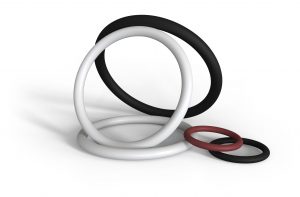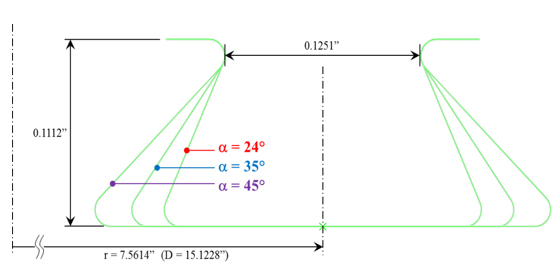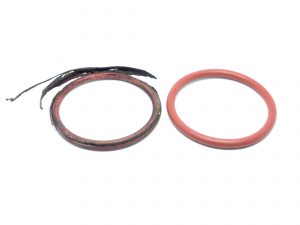
Failure Modes for Elastomers in the Semiconductor Industry

To deal with elastomer sealing problems that occur in the semiconductor industry, root cause failure analysis is critical to solving issues and preventing them from reoccurring. This type of analysis should be carried out as a joint effort between the end user
and the seal supplier/manufacturer. Although it is important to find the solution as quickly as possible, the seal manufacturer cannot easily assist in root cause analysis without application details, including application temperatures, pressures, chemical environment and seal design. In addition, the seal manufacturer will need the failed part to properly conduct a root cause analysis.
The following sections detail common issues that occur with seals in the semiconductor industry. Examples are often given for o-rings, but are also applicable to other seal shapes.
Groove Design

future problems.
Seal Leakage
Leakage is a very general term used for a variety of problems, some of which may be related to seal design. For this section, a leak is defined as a seal (equipment and/or elastomer related) that allows fluid to pass around the elastomer and into the process from the environment, or from the process out to the environment. In the case of plasma processes, atmospheric leakage of gas into the process chamber can introduce contaminants that affect integrated circuit quality.
Some common causes of seal leakage are included below. Note that items 2-4 are often related to groove design.
- An o-ring is cut or damaged during installation. Use care when installing an o-ring over sharp edges and/or be sure to grind off any sharp edges.
-

over compression of an elastomer seal is problematic and can lead to leakage. - Due to thermal expansion or chemical swell, the o-ring overfills the groove at application temperature and extrusion occurs, resulting in leakage.
- An o-ring is overstretched, e.g. greater than 5% stretch. This overstresses the ring and can lead to premature part failure and subsequent leakage.
- The o-ring suffers attack due to the environment and the o-ring develops splits or cracks, or general degradation, which leads to leakage.
About the Author

Russ received a Bachelor of Science in Chemical Engineering from Columbia University in New York and MBA from the University of Delaware.
